Finding the best VW Type 2 Exhaust
When it comes to funneling fumes from the engine of your Splitscreen bus or Baywindow campervan there are plenty of choices available. Whether you want something quiet or something sporty, something that is hidden away or with lots of tailpipes on show, we'll steer you straight to finding the best VW Type 2 exhaust for you.
The different types of VW Type 2 Exhaust
There are several options when it comes to buying a Type 2 exhaust. Standard, just as Volkswagen intended. A sports one-piece system, a sports 2 piece header and silencer system, a merged header or equal length performance system for producing the most power. All have their own reasons for being the right thing for the right job. If you are restoring a VW Type 2 to the original specification it makes absolute sense to fit an original style exhaust. However, if the van is running a tuned motor you'll probably want something to better suit that. Ground clearance is another factor that can influence your exhaust choice. Some systems will hang down too low, likewise if you have a tow bar fitted you may also run into complications fitting any 4 into 1 header with a central silencer flange.
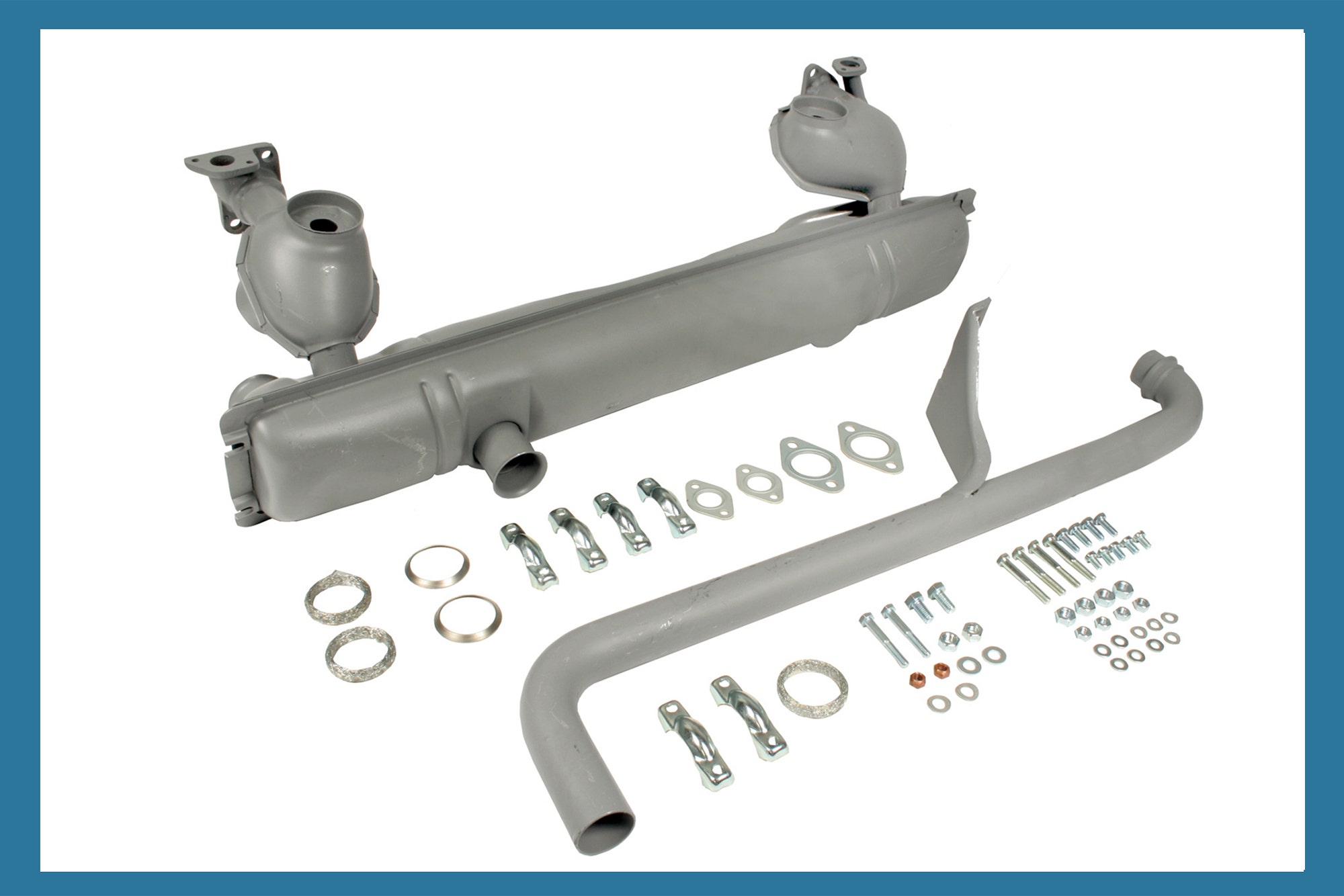



What are VW Type 2 Exhausts made from?
There are two main materials that exhausts are made from; mild steel and stainless steel. When it comes to mild steel these are sold either in bare metal, a painted finish, or sometimes with a ceramic coating. The benefits of mild steel are the lower cost of production and purchase which means a larger range of designs available. Ceramic coating is mostly found on performance exhausts and not only offers protection from the elements but it helps to reduce external temperatures in and around your engine compartment. Corrosion is the biggest drawback to any mild steel exhaust product. Even with a high-temperature paint coating, the position of your exhaust system will mean it gets peppered with stone chips and splashed by every puddle on the street. This will inevitably lead to rust issues and you having to source a replacement. The lifespan of a mild steel exhaust in regular use is on average 2-3 years; whilst you might get a few more from fair-weather driving it will eventually fail. Stainless steel Type 2 exhausts are almost always polished, and whilst more expensive than those made of mild steel have the benefit of lasting much longer. The initial purchase price is typically double but if you plan on keeping your vehicle indefinitely you will be making a saving on maintenance costs in the years to come.
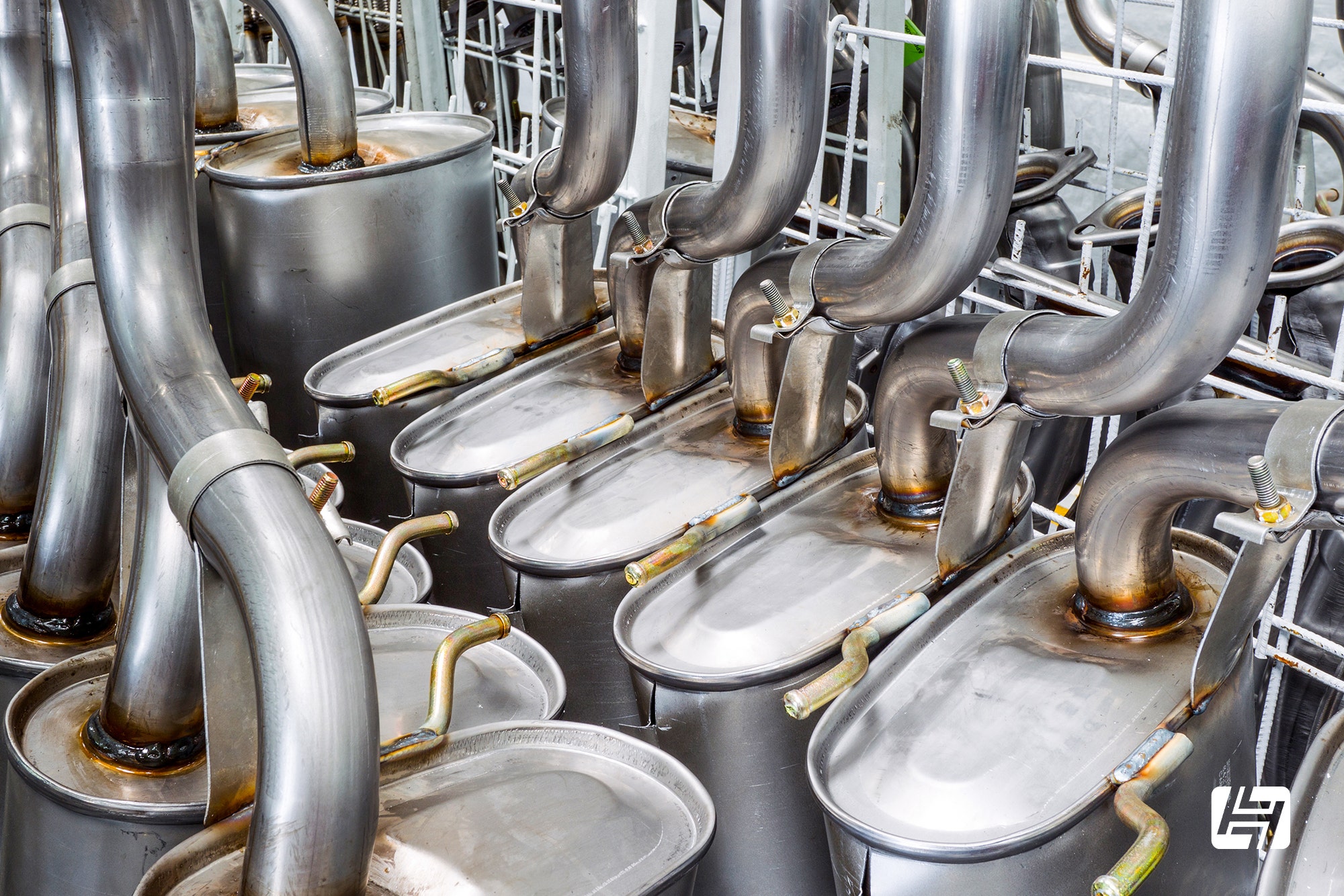
How do VW Type 2 Exhausts and heat exchangers work?
Due to the design of the Volkswagen flat-four engine which has exhaust ports to the front and back of the cylinder heads on both sides, there is a fair amount of pipework involved in getting gases to the rear of the van, and out into the atmosphere. Because these vehicles do not have a fluid-based cooling system they also use the exhaust gasses to generate heat to keep the passengers warm in winter. This is done with the use of heat exchangers, which connect the exhaust ports on the cylinder heads to the silencer but with the added benefit of catching the heat which is radiated from the pipework before blowing it back towards the cabin when the driver requires it. Regardless of whether you have a Type 1 or Type 4 engine, the principles are the same and the heat exchangers have mounting points onto which the silencer will attach. Should you start smelling exhaust gases inside your vehicle, or suffering from headaches or sickness after driving you must inspect your heat exchangers. Because of their design, when the insides start to corrode (and they will eventually from repeat condensation) exhaust gases will then mix with the fresh air that is piped into your heater vents. Failure to fix this issue could lead to carbon monoxide poisoning for you or your passengers, which can be fatal. Cash-conscious owners might choose to fit J-Tubes, which are considerably cheaper and will replace the heat exchangers with plain pipework. However, they will leave the vehicle without an engine-generated heat source which may be a worry, unless you live in a warm country or only drive in the summer. Removal of the heat exchangers can offer a small performance benefit, allowing for larger diameter pipework to be fitted from the cylinder heads. Although big-bore heat exchangers are a product we can supply for those fond of heating but with bhp on their minds.
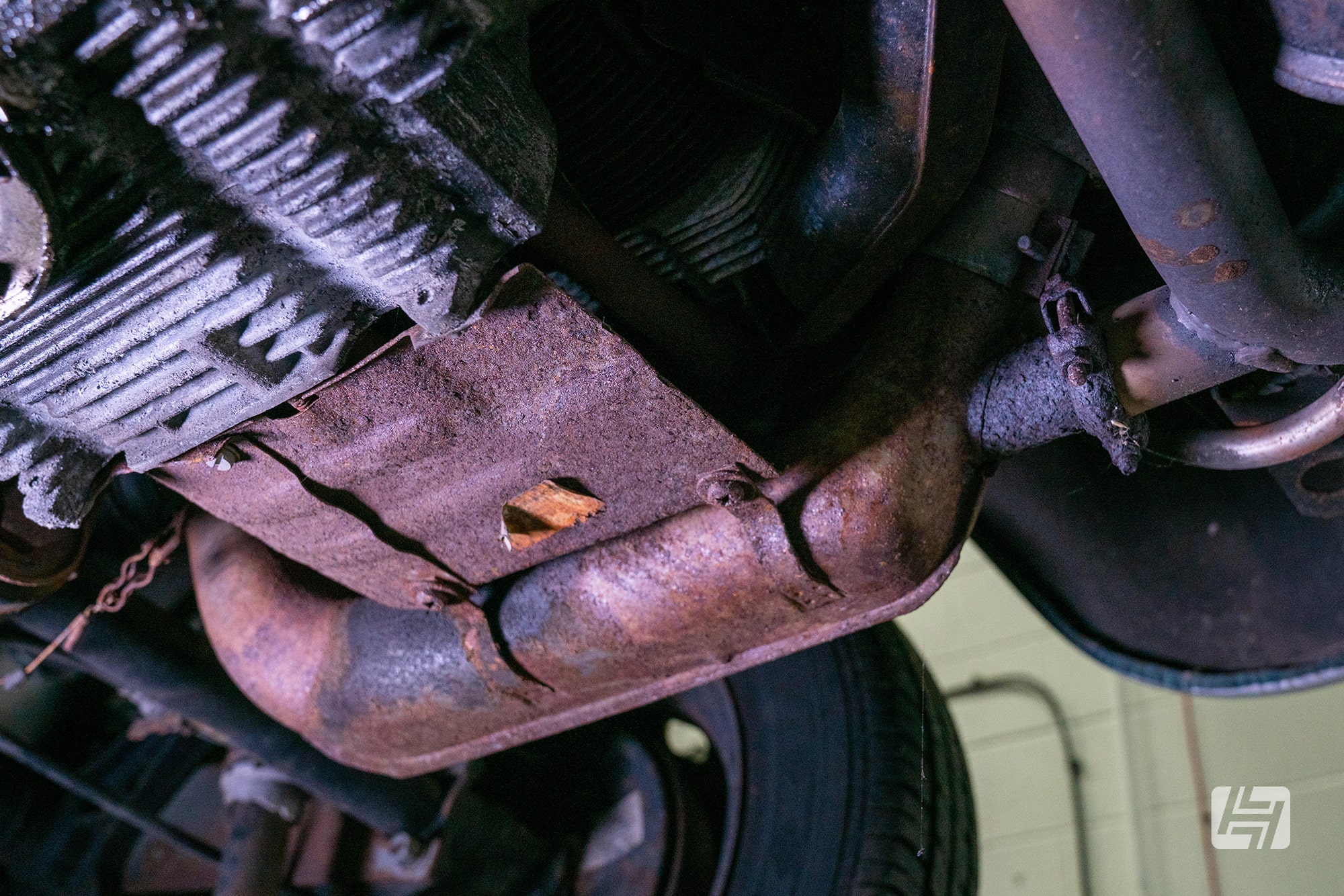

Buying a standard Type 2 Exhaust
If you are shopping for an original Splitscreen silencer or standard Baywindow exhaust you will have the choice of mild steel, mild steel with a stainless tailpipe, or a full stainless steel system. The mild steel system will either come in 2 pieces; a silencer and a tailpipe that exits on the left side of the van under the tail lamp. Or a 3 piece kit that includes a support bracket separately, rather than welded to the tailpipe. Both look the same once fitted. For those wanting a little more bling at the back, we offer a great value mild steel exhaust with a stainless tailpipe suitable for both the Splitscreen and Baywindow models. The stainless steel Type 2 exhaust system is a 1 piece construction is the pick of the bunch, but naturally costs Owners with a Type 4 engine (1700-2000cc) powering their van will require a different type of exhaust silencer. These have two flanges on either side that mate to the rear of the heat exchangers and a much shorter bolt-on tailpipe that exits on the side of the silencer box, rather than the rear of it like the 1600cc models. These are available in both mild steel and as a Type 4 stainless steel silencer, as pictured below. If you have an early Split bus with a 25/30hp or 1200cc motor installed then be extra vigilant. The 1200cc motor is narrower, and most off-the-shelf exhaust systems won't fit. Likewise, if you own a late Californian import with fuel injection you might find the mounting points are different; either narrowing your choice of replacements considerably or forcing you to convert to a carburetor like a run-of-the-mill European model had as standard.

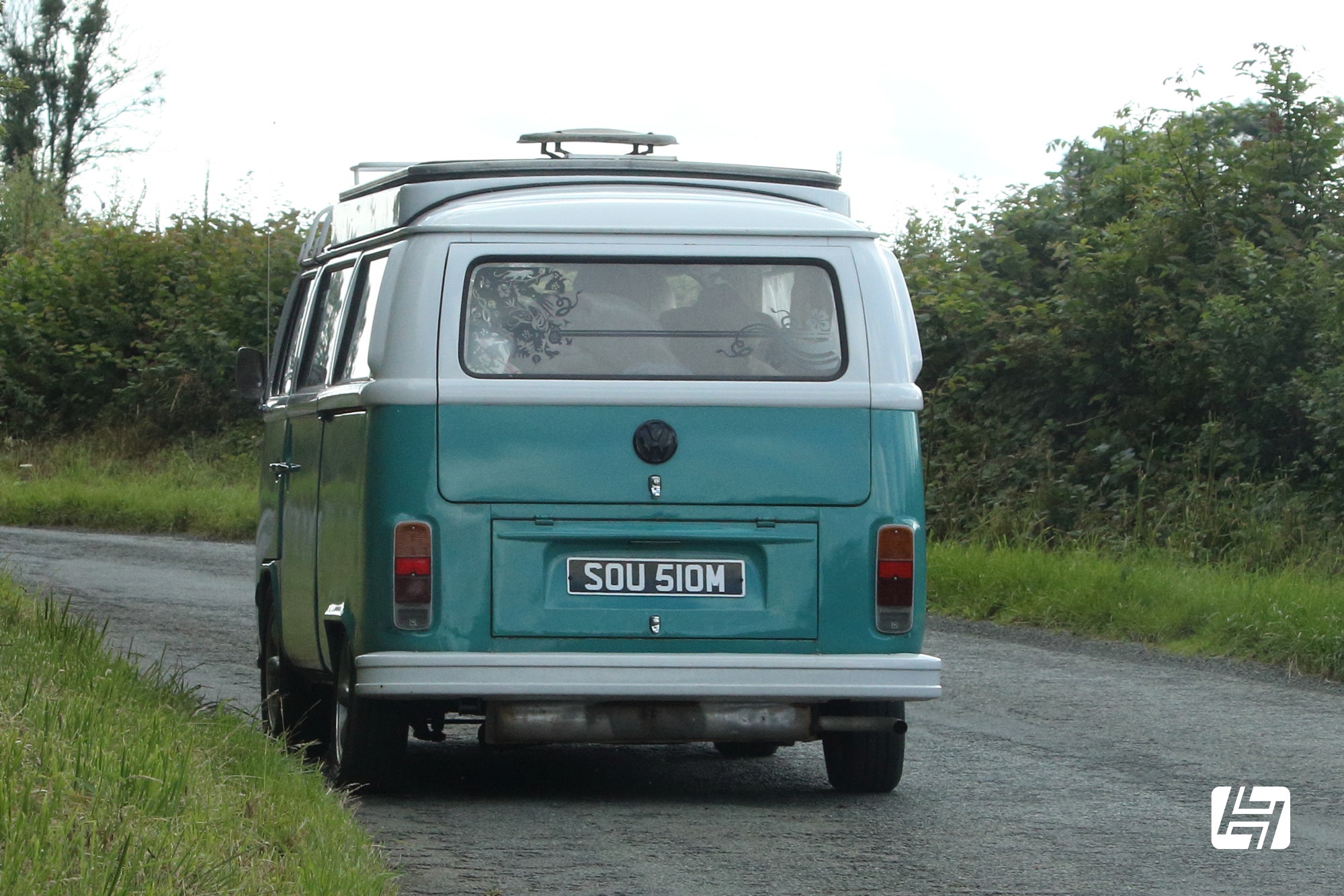


Buying a VW Type 2 Sports Exhaust
Sports exhausts for the Type 1 engine include one-piece designs like the Monza 4 Tip, and small and large flange 'header and muffler' models such as the best selling Single Quiet Pack, Dual Quiet Pack, and Single Glass Pack. If you own a Splitscreen Bus then you can fit "Beetle fitment" systems which will sit a little higher off the deck, however, they can cause soot marks from sitting too close to your bumper. Alternatively, fit the "Bus fitment" systems, but you may find the silencer hangs a little low for your liking, especially if your van is already hugging the tarmac. Sadly there's no way to adjust the height that these sit at, without getting busy with an angle grinder and a welder. Not all sports exhausts will have the mounting points for the inlet manifold preheat pipes, so do check photographs and the description before purchase if you are running a single carburettor system. In almost all cases there will be no specific warm air mounting point, as found on the original exhaust. Most sports systems will come with a length of aluminum ducting to position above the manifold to help direct warm air to the air filter. If you have a 1700-2000cc you will be limited to a single quiet pack or twin quiet pack in the sports exhaust sector. There could be several reasons for buying a sports exhaust for your Type 2. By design they are a little more free-flowing, they have a deeper or louder sound to help turn more heads and lastly, they are great value with prices very similar to the cost of a stock exhaust system. Visually you can take a good guess at how loud your new exhaust will be by the size of the silencer. The Glass Pack and Econopack systems have much smaller silencer elements in comparison to the Quiet Pack and Phat Boy designs, and because of this, they will be noticeably louder.
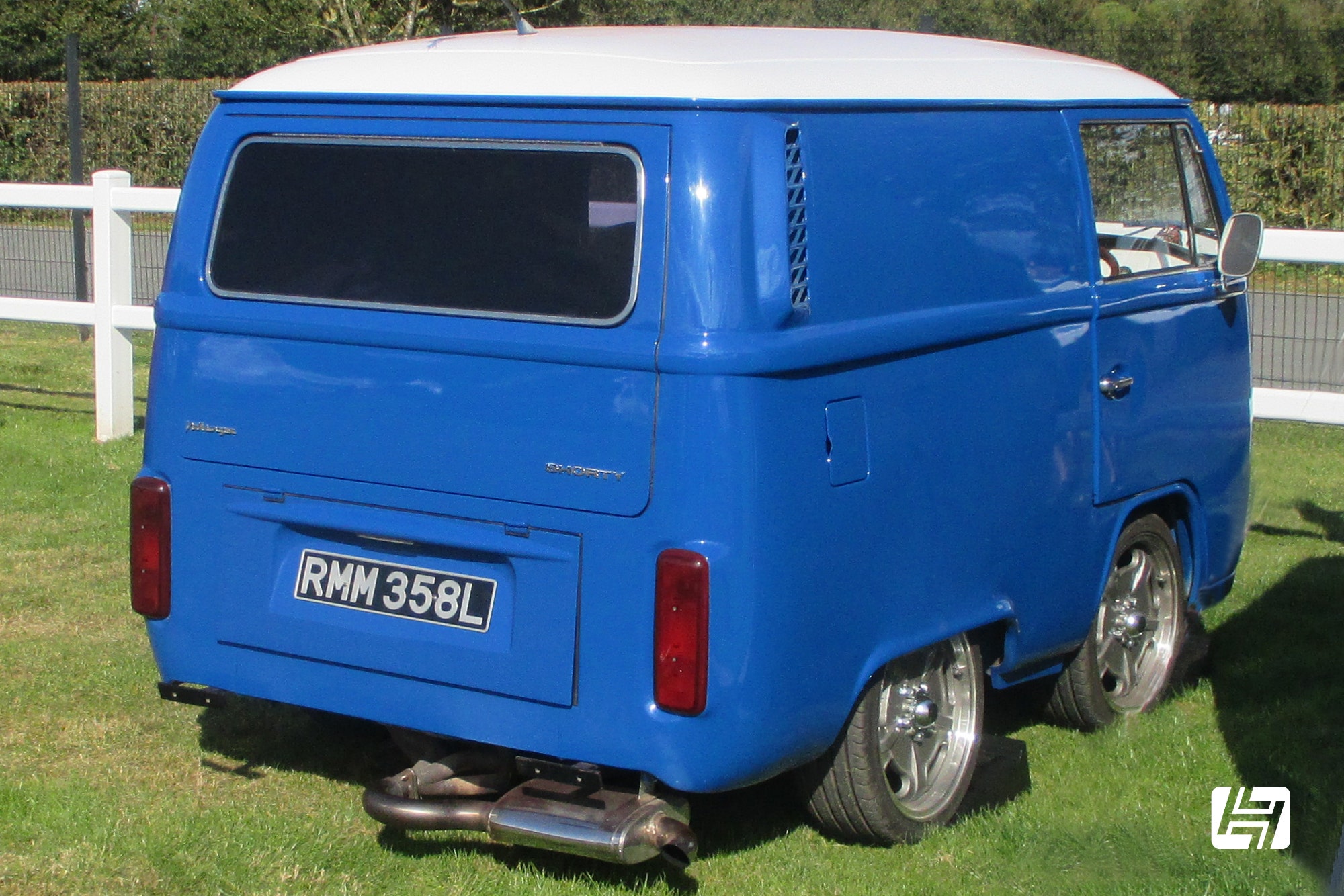
Buying a performance VW Type 2 Exhaust
Designed for use in conjunction with increased engine capacity and larger carburetors, these exhaust systems have been produced to release extra engine power, with the added benefit that they are pleasing on the eye too. Manufactured in stainless steel by the likes of CSP, Vintage Speed, and SSP they carry a higher price tag, but owners are rewarded with a top-quality product that should last them a lifetime. There are a few choices to be made with regards to practicality and style, with current trends leaning towards a more hidden design rather than a big box and lots of pipework on show. Suppliers like Vintage Speed handily offer a number of different pipe sizes, depending on the power your engine is producing. Typically a larger bore would be used on a more powerful engine. Their 'Sports Exhaust' range is most suited to standard engine applications in Splitscreen buses and Baywindow models. It is worth noting that fitting a merged header system with a 'stinger' tailpipe design (a coned tube with no silencer, as shown below) is only suitable for race or show use. In most places, the noise these create will be considered antisocial and the 2ft tailpipe a hazard to pedestrians and other road users.
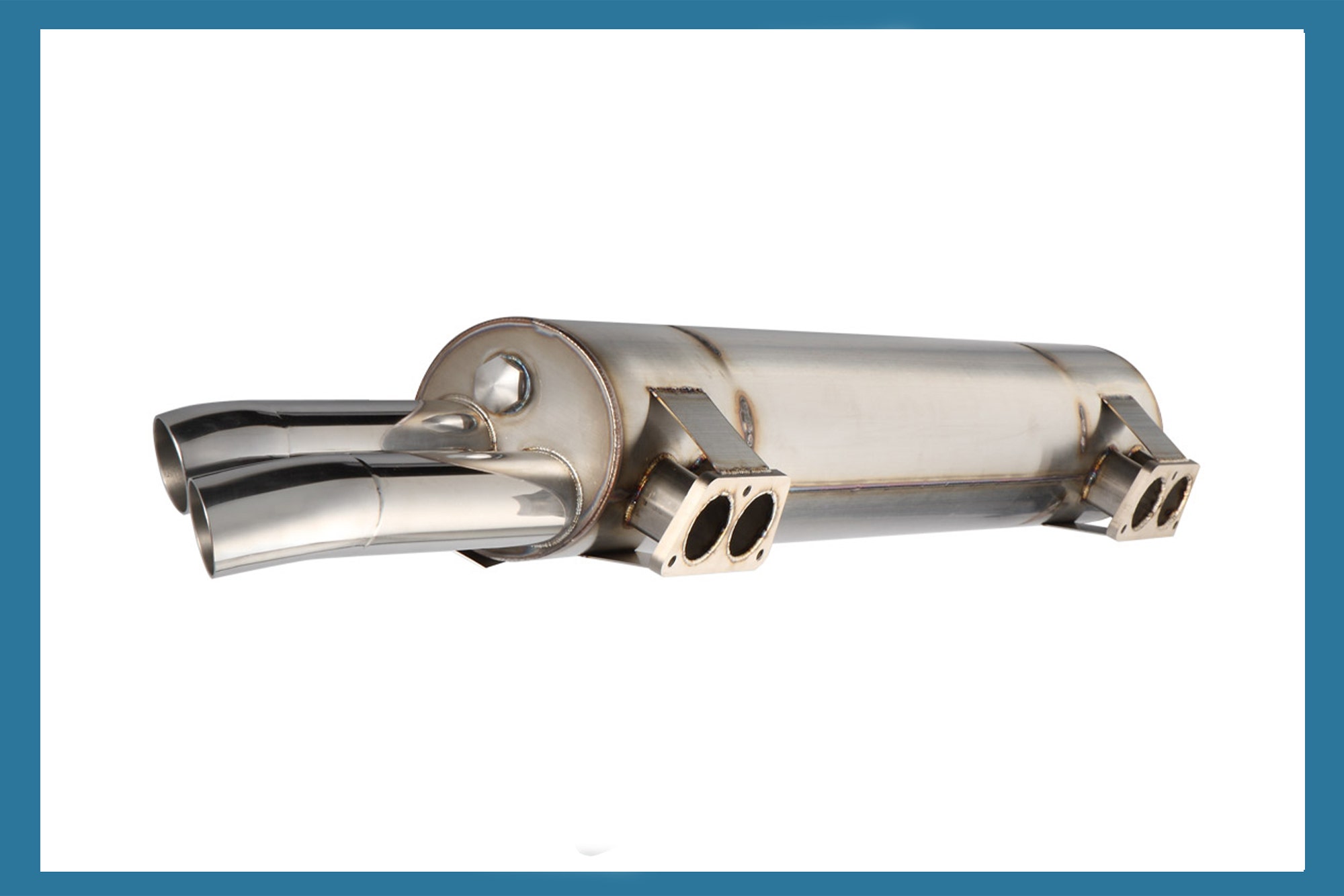


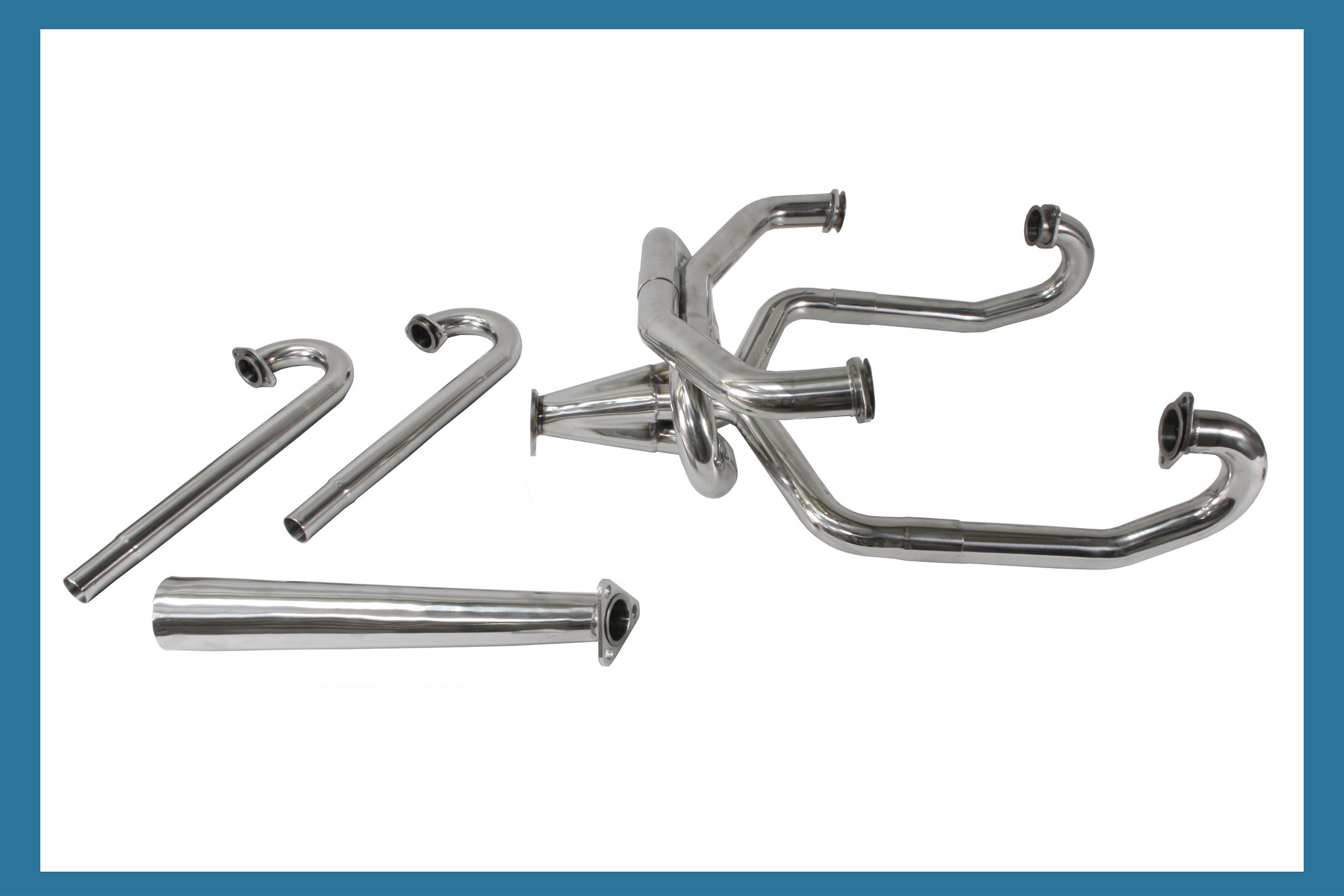
Best selling exhausts for VW Type 2 1600cc
We've dug into the data to share with you a list of top sellers over the past few years. Not sure about the style you want yet, or searching for reassurance that you've picked a good one, then this might just help you decide.
Complete Standard Exhaust kit with stainless steel tailpipe, Split and Bay. 211-298-051/SS
Vintage Speed Sports Exhaust with standard style tailpipe, T2 Bay. AC251816
Vintage Speed Sports Exhaust with tuck tailpipe design, T1 Split. AC251815
SSP Stainless Steel Mondo Muffler & Header, T1 Split. AC251712 + AC251709
EMPI Single Quiet Pack, Split or Baywindow AC2513655
Monza 4 Tip, Split or Bay. AC251423
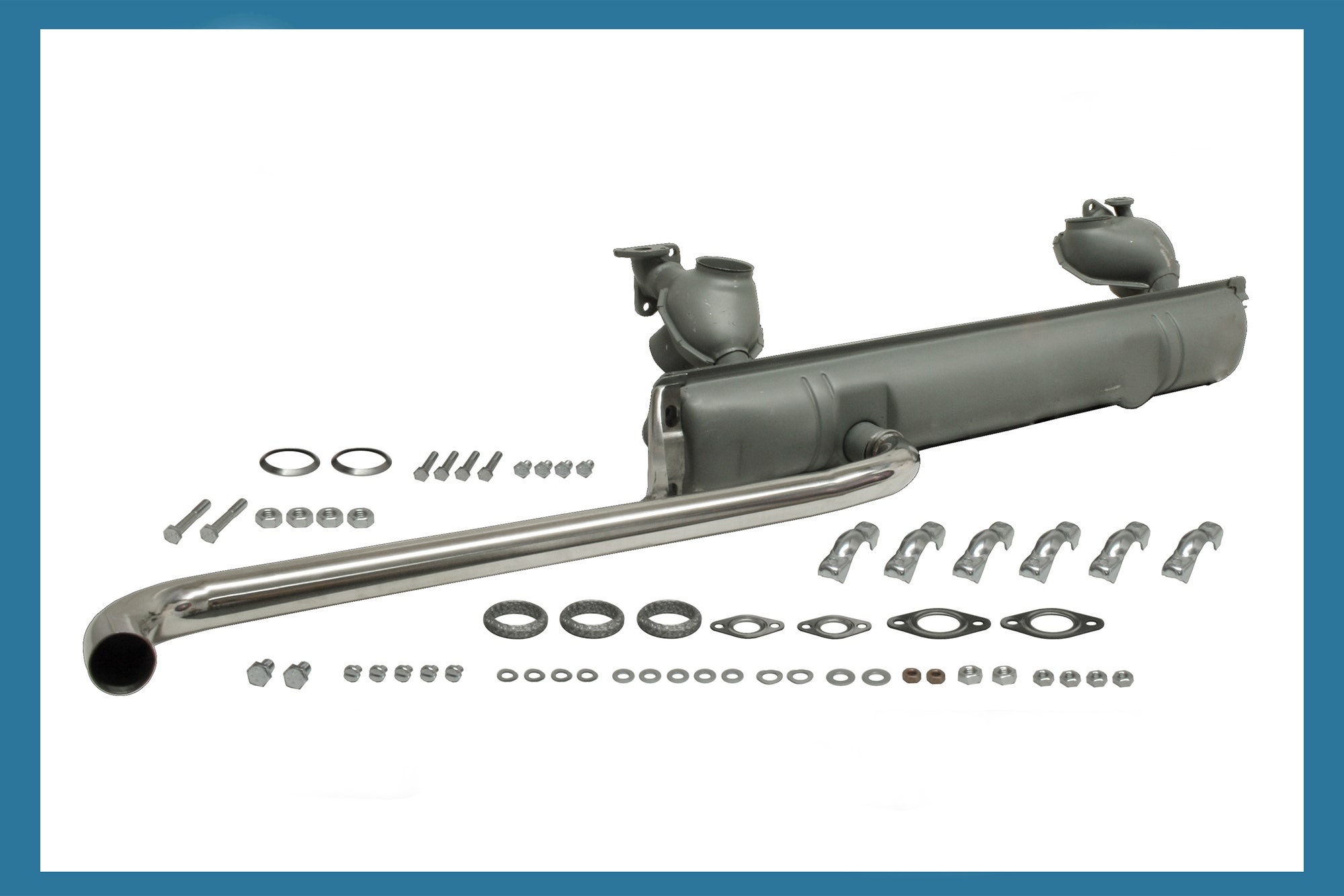

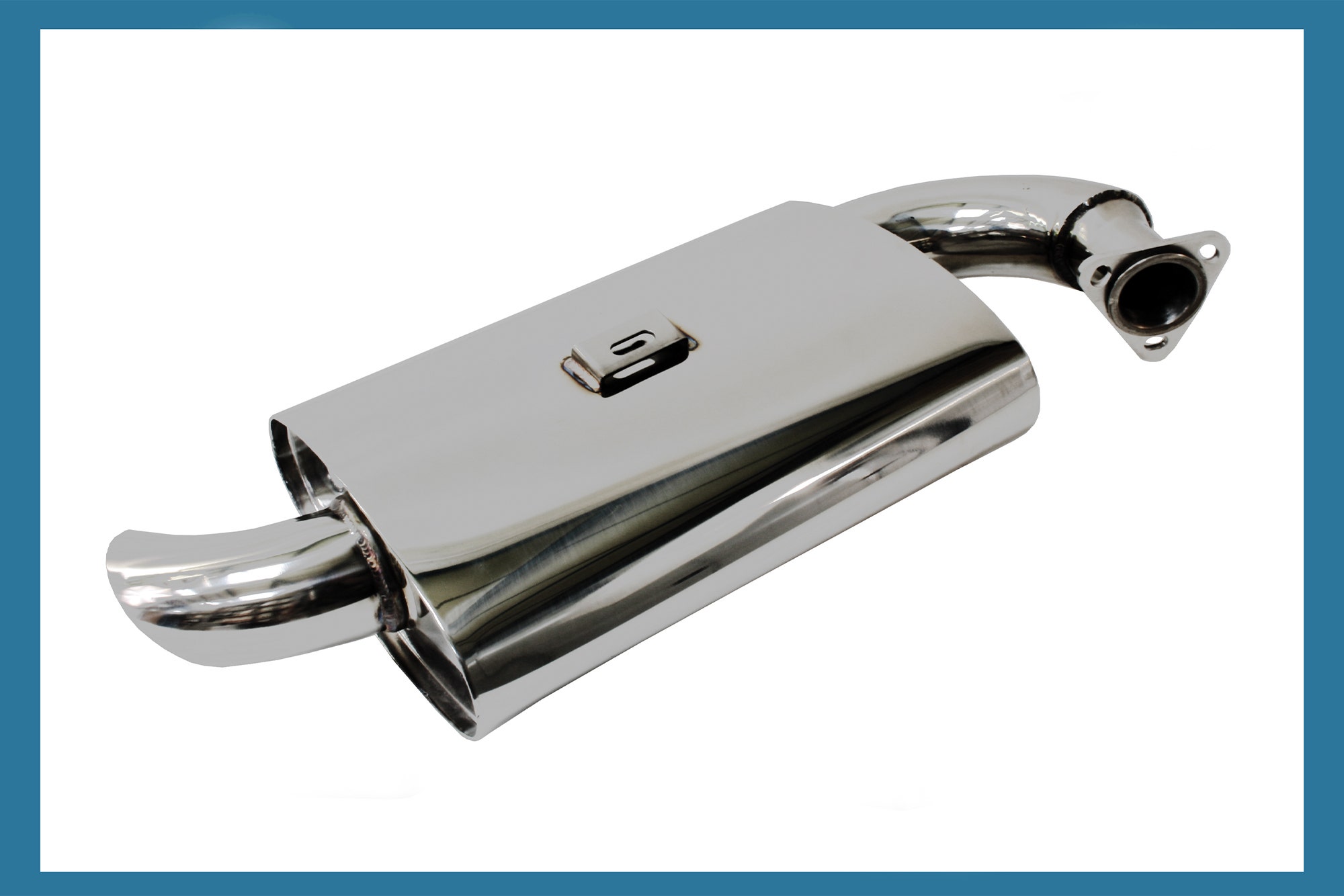

Best selling exhausts for VW Type 2 1700-2000cc
EMPI Twin Quiet Pack, 1700-2000cc T2 Bay. AC2513483
Vintage Speed Superflow tuck tailpipe, 1700-2000cc T2 Bay. AC251829
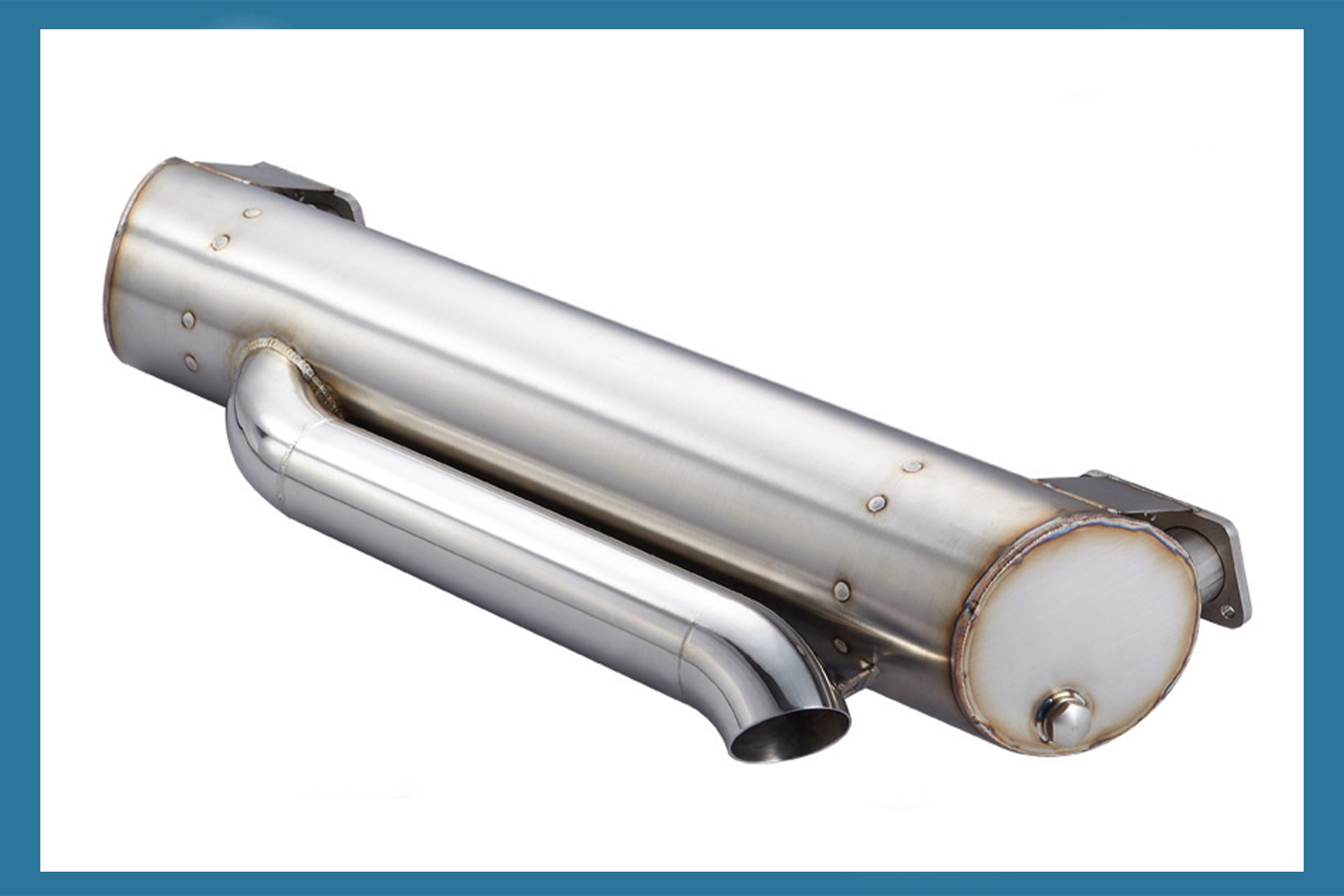

Expert exhaust help is on hand
We completely understand that picking the right Type 2 exhaust can be tricky. There are many which look similar, so how do you know which one is right? Our team is on hand to help with all exhaust-related questions either by telephone, live chat, or email. I hope this article has helped or at least offered some inspiration for your project.
Andy




 Bug
Bug
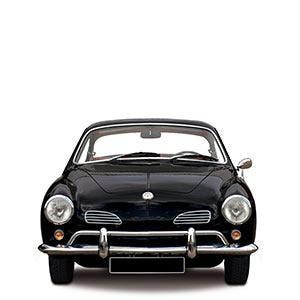 Karmann Ghia
Karmann Ghia
 Bay Bus
Bay Bus
 Vanagon
Vanagon
 Eurovan
Eurovan
 Transporter T5
Transporter T5
 Rabbit Mk1
Rabbit Mk1
 Golf Mk2
Golf Mk2


 911
911
 996
996
 997
997
 986 Boxster
986 Boxster
 987 Boxster
987 Boxster
 912
912
 944
944
 924
924






